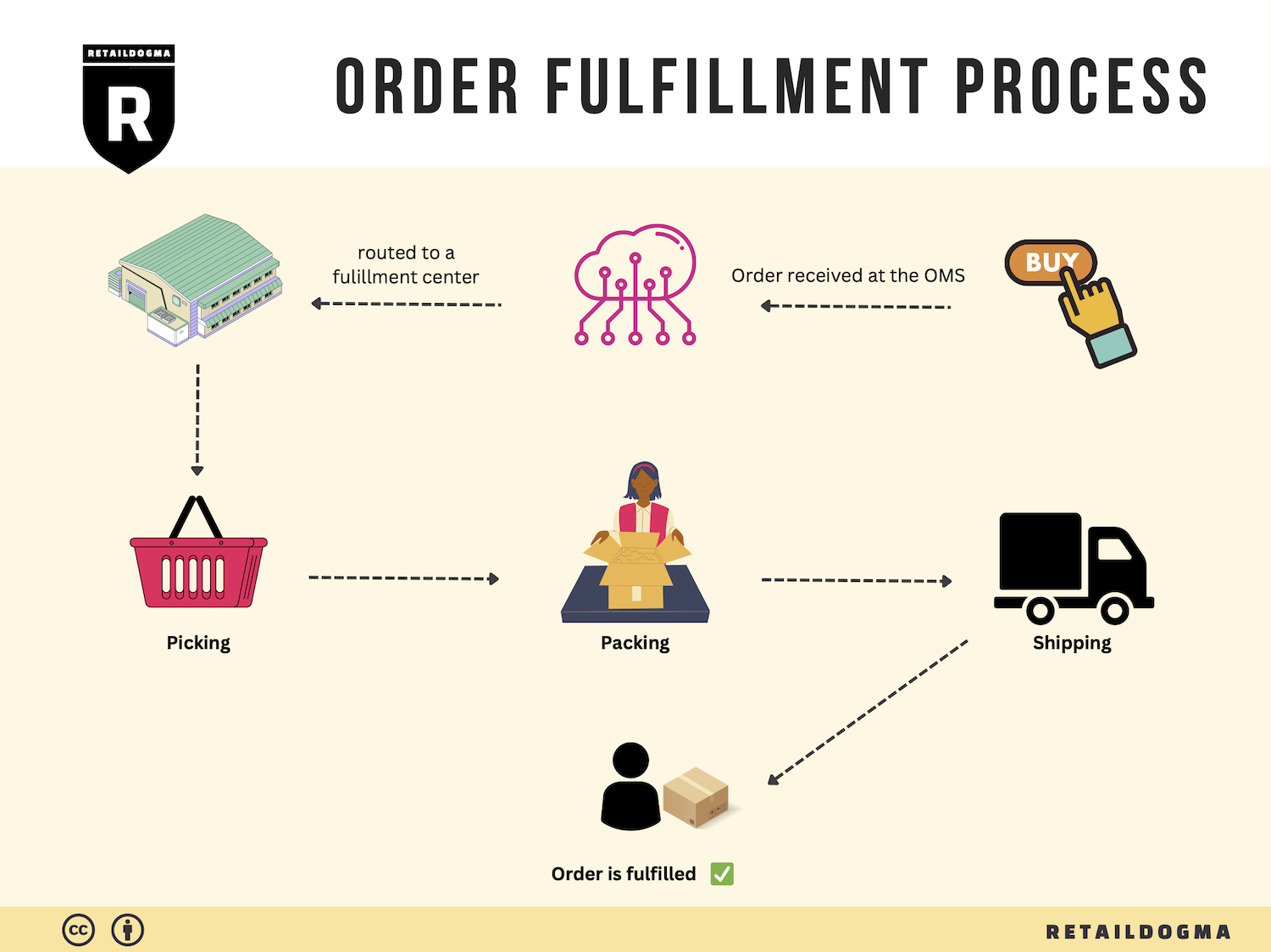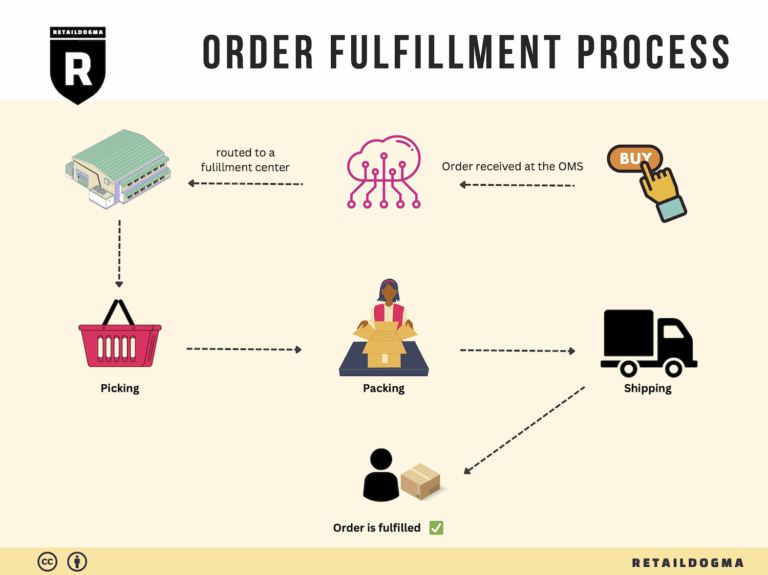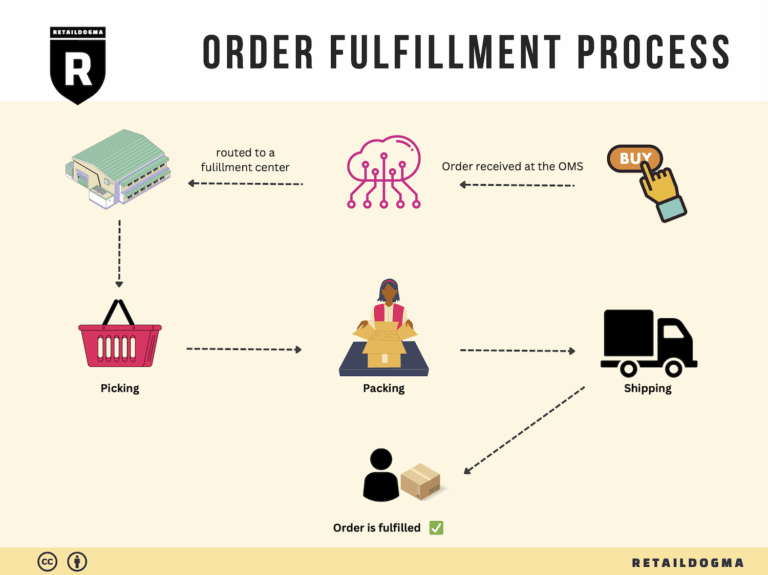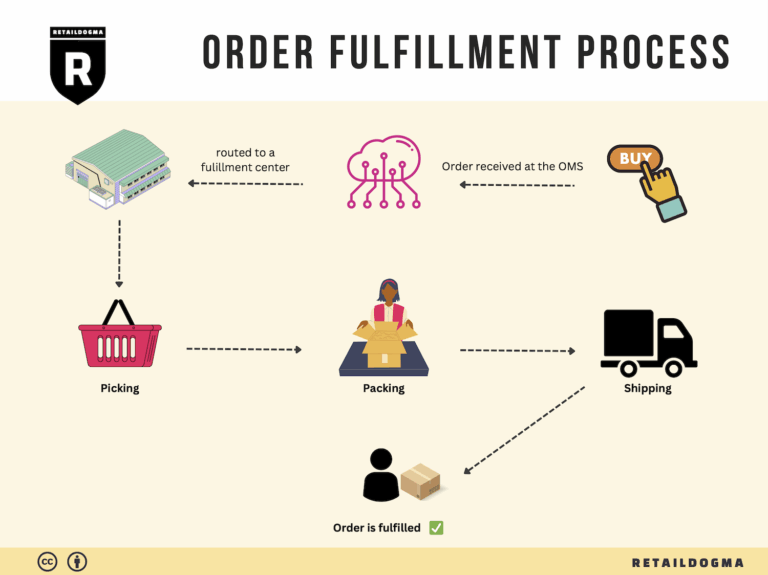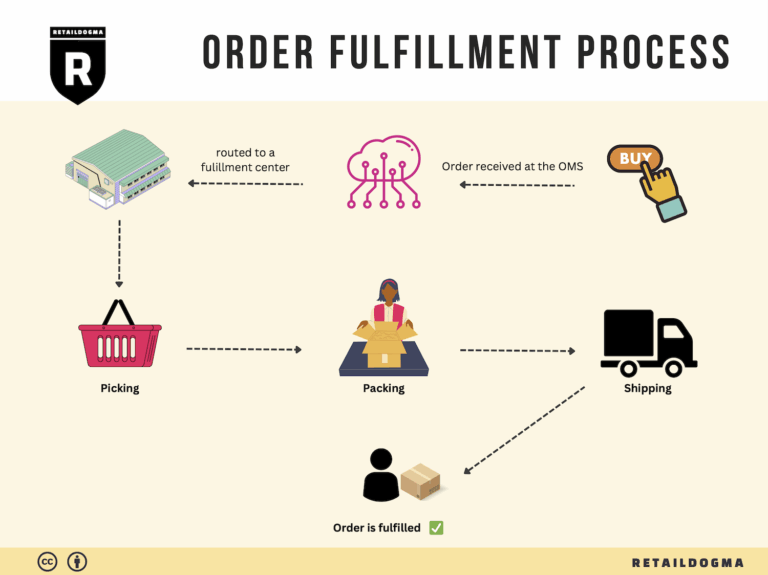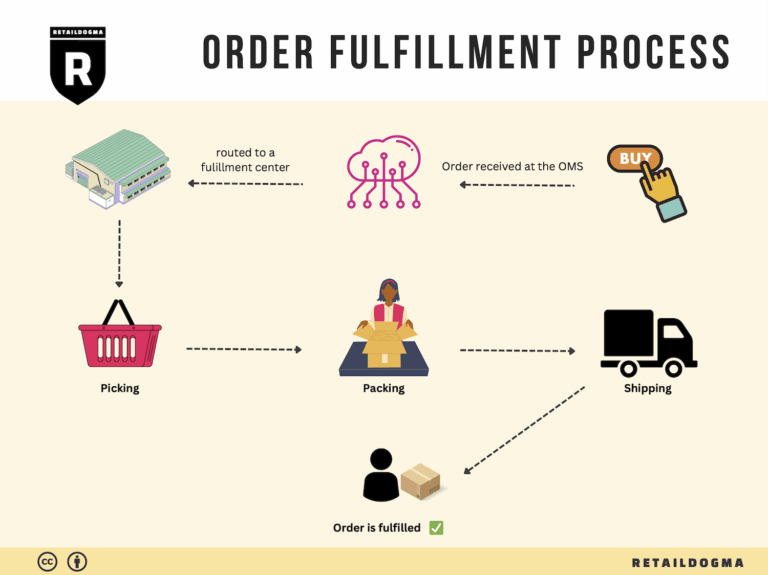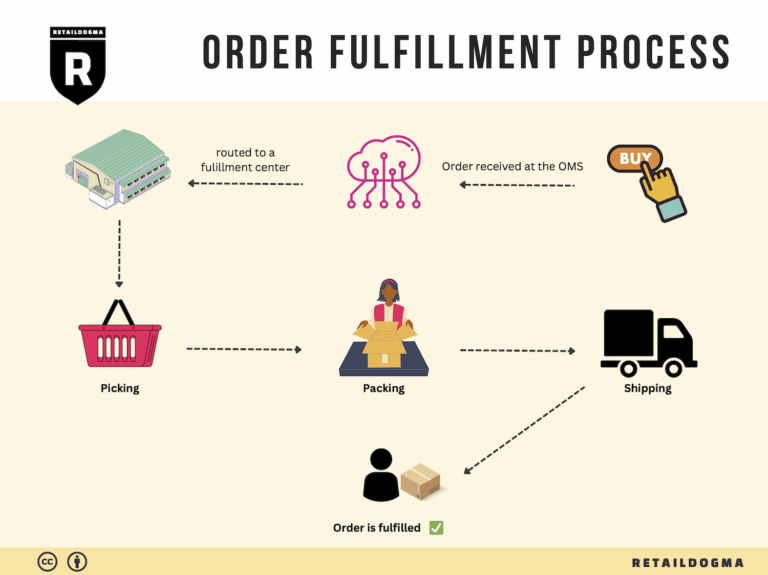Ecommerce Fulfillment Services: The Ultimate Guide (2025)
What is E-commerce Fulfillment? An Introduction for Growing Businesses
Getting overwhelmed with packing and shipping orders is a common challenge for growing online businesses. As your sales increase, so does the complexity of fulfilling customer orders, which can lead to operational bottlenecks, dissatisfied customers, and ultimately, lost revenue. This is where e-commerce fulfillment comes into play—a crucial process that involves getting your products from your inventory to your customers’ doorsteps efficiently and accurately.
Understanding E-commerce Fulfillment
At its core, e-commerce fulfillment is the complete process of receiving, processing, and delivering orders to customers. This includes everything from managing inventory and picking items, to packing orders and handling shipping logistics. For businesses looking to scale, mastering this process is vital to maintaining customer satisfaction and ensuring operational efficiency.
In this guide, we will explore various fulfillment models that can suit your business needs. You’ll learn about third-party logistics (3PL) providers, which offer outsourced services for managing your fulfillment operations, and Fulfillment by Amazon (FBA), which leverages Amazon’s infrastructure to handle storage and shipping for your products. Understanding these models will help you decide which approach aligns best with your business strategy and customer expectations.
Core Services of E-commerce Fulfillment
We will also delve into the core services that fulfillment partners typically offer, such as inventory management, order processing, shipping, and returns handling. These services are essential for streamlining your operations and ensuring that your customers receive their orders on time and in perfect condition. Additionally, we’ll discuss value-added services like kitting and personalized packaging that can enhance your brand’s value proposition.
Choosing the Right Fulfillment Partner
Selecting the right fulfillment partner is a critical decision that can impact your business’s scalability and customer experience. This guide will provide practical insights on how to evaluate potential partners based on their technology, network capabilities, customer service, and scalability options.
Pricing Considerations
Finally, we will break down pricing structures and what factors influence fulfillment costs. Understanding these elements will empower you to make informed decisions that align with your budget and operational goals.
Empowering Smart Logistics Decisions
The ultimate goal of this guide is to equip you with the knowledge and tools necessary to make smart decisions about your logistics. By understanding e-commerce fulfillment, you can enhance your operational efficiency, improve customer satisfaction, and drive growth for your online business. Let’s dive in!
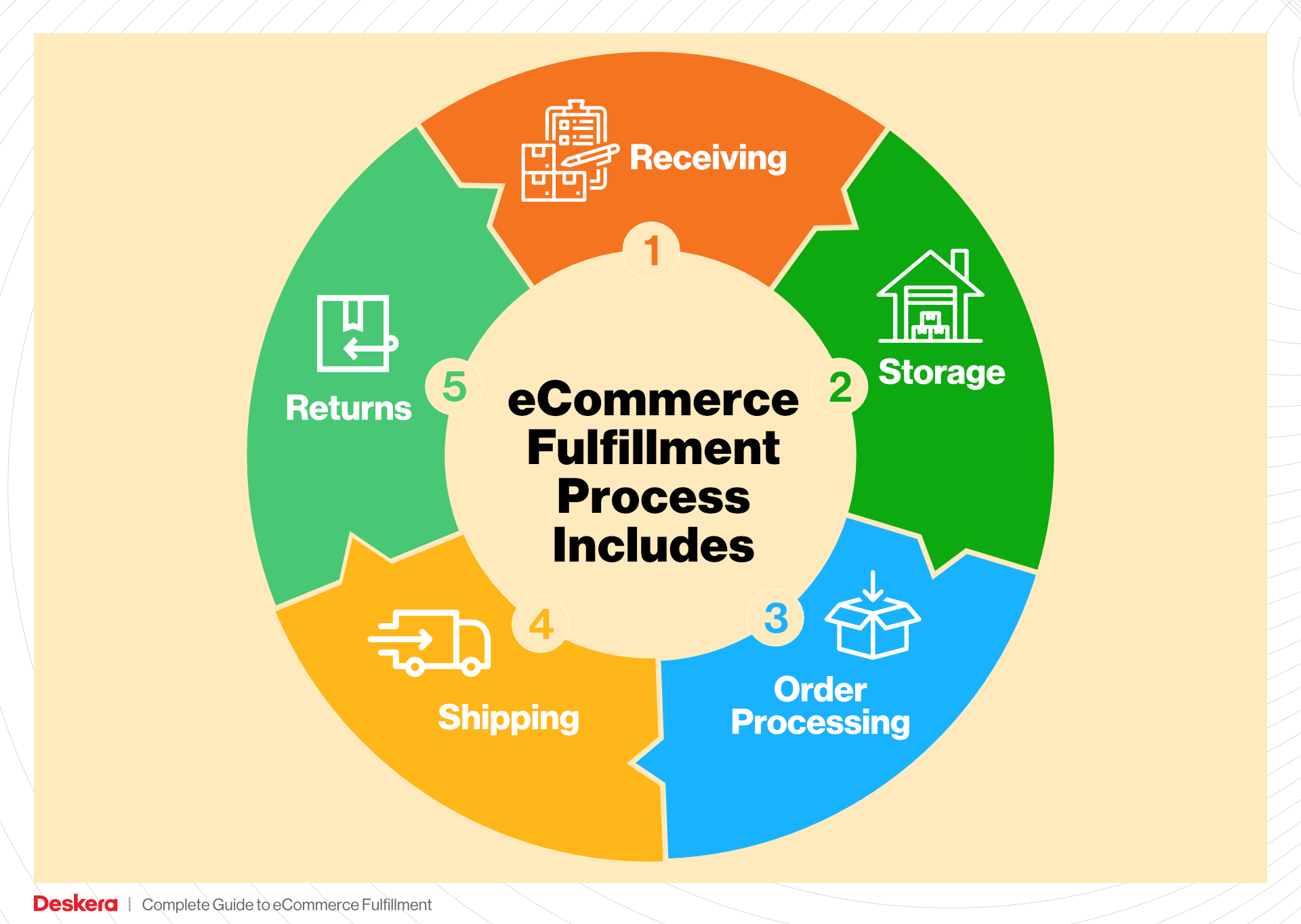
What You’ll Learn In This Guide
- What is E-commerce Fulfillment? An Introduction for Growing Businesses
- The Order Fulfillment Process: From ‘Buy’ Button to Customer’s Door
- Comparing Fulfillment Models: In-House vs. 3PL vs. Dropshipping
- A Deep Dive into Amazon FBA: Pros, Cons, and Who It’s For
- Core Services Offered by Fulfillment Centers
- How to Choose a Fulfillment Partner: A 6-Point Checklist
- Understanding Fulfillment Pricing: A Breakdown of Common Fees
- Frequently Asked Questions (FAQs) about Fulfillment
- Conclusion: Is Outsourcing Fulfillment the Right Move for Your Business?
- Important Disclaimer
The Order Fulfillment Process: From ‘Buy’ Button to Customer’s Door
1. Receiving Inventory
The order fulfillment process begins with receiving inventory at the fulfillment center. This step involves inspecting and documenting the incoming goods, ensuring they match the purchase orders from suppliers. Key terms associated with this stage include SKU (Stock Keeping Unit), which is used to identify each product uniquely.
Receiving inventory is crucial because it sets the foundation for accurate inventory management. Any discrepancies at this stage can lead to stockouts or overstock situations, affecting overall customer satisfaction. An effective receiving process ensures that products are accounted for and that any damaged items are reported and returned promptly.
In addition, utilizing technology such as barcode scanning can streamline this process, reduce human error, and provide real-time inventory updates. This not only enhances operational efficiency but also improves the accuracy of inventory data, which is essential for effective order management.
2. Warehouse Storage
Once inventory is received, the next step is warehouse storage. Products are organized and stored in designated areas within the fulfillment center, often categorized by type, size, or sales velocity. Implementing a warehouse management system (WMS) is vital here, as it helps track product locations and manage stock levels effectively.
Proper warehouse storage is important because it directly impacts the efficiency of order picking. A well-organized warehouse reduces the time it takes to locate items, thus speeding up the entire fulfillment process. Additionally, effective storage strategies, such as using vertical space or implementing a first-in, first-out (FIFO) system, can optimize space utilization and reduce holding costs.
Moreover, regular inventory audits and cycle counting are recommended to maintain accurate stock levels, ensuring that the fulfillment center can meet customer demand without delays.
3. Order Picking
The third step is order picking, where items are selected from their storage locations to fulfill customer orders. This process typically involves generating pick lists, which detail the items and quantities needed for each order.

Order picking is a critical phase in the fulfillment process, as it directly affects order accuracy and customer satisfaction. An efficient picking strategy—such as batch picking or zone picking—can significantly reduce the time taken to gather items. For instance, batch picking allows workers to pick multiple orders simultaneously, enhancing productivity.
Incorporating technology like pick-to-light systems or mobile scanning devices can further streamline this step, reducing the likelihood of errors and ensuring that the right products are selected. Ultimately, effective order picking is essential for maintaining high order accuracy rates, which can boost customer loyalty and repeat business.
4. Order Packing
After items are picked, they move to the order packing stage. Here, products are securely packed for shipping, often utilizing packing slips and protective materials to ensure safe transit. Key terms in this stage include packing slips and dimensional weight pricing, which can influence shipping costs.
The importance of order packing cannot be overstated; it not only protects items during transportation but also reflects the brand’s commitment to quality. Thoughtful packing can enhance the unboxing experience for customers, making them more likely to share their positive experience on social media.
Additionally, implementing packing automation technologies can increase efficiency and reduce labor costs. For example, automated packing machines can optimize box sizes based on the items being shipped, minimizing wasted space and reducing shipping costs.
5. Shipping & Delivery
The final step is shipping and delivery, where packed orders are handed over to carriers for transportation to the customer’s location. This stage involves selecting the appropriate shipping method, tracking shipments, and managing delivery timelines. Key terms relevant to this stage include last-mile delivery and shipping carriers.
Shipping and delivery are crucial because they are the last touchpoints in the customer experience. Timely and accurate delivery can significantly influence customer satisfaction and retention. Moreover, offering multiple shipping options, including expedited delivery, can cater to varying customer needs and expectations.
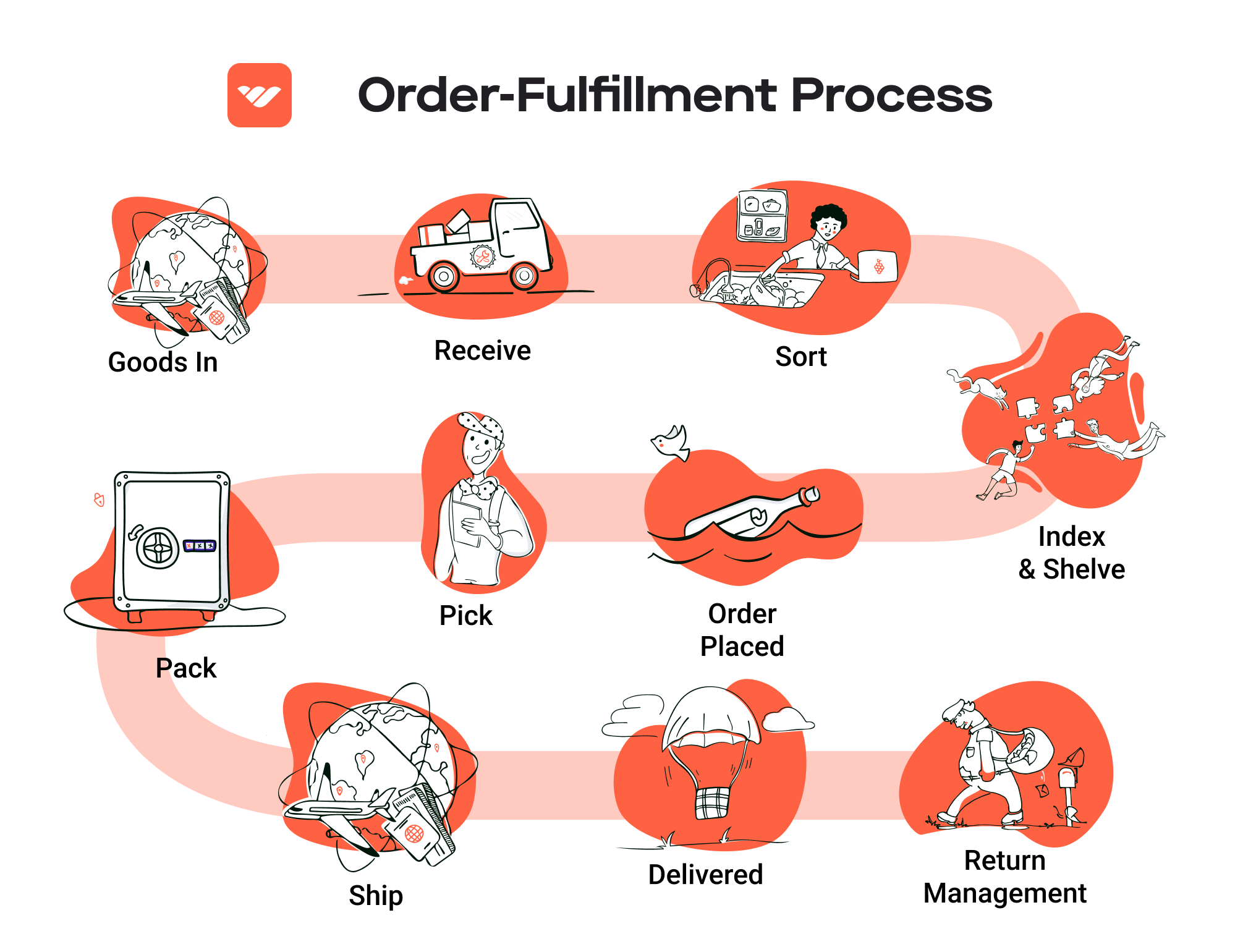
Utilizing advanced logistics technology can enhance visibility throughout the shipping process. For example, providing customers with tracking information can improve transparency and reduce inquiries about order status. Additionally, establishing partnerships with reliable carriers can help ensure that deliveries are made on time and in good condition.
In conclusion, mastering each step of the order fulfillment process is essential for e-commerce businesses looking to scale effectively. By focusing on these critical stages—receiving inventory, warehouse storage, order picking, order packing, and shipping & delivery—businesses can enhance operational efficiency, improve customer satisfaction, and ultimately drive growth.
Comparing Fulfillment Models: In-House vs. 3PL vs. Dropshipping
Fulfillment Model Comparison
| Model | Who Handles Inventory | Best For (Business Stage) | Key Advantage | Key Disadvantage |
|---|---|---|---|---|
| In-House Fulfillment | The business itself | Established businesses with stable sales | Complete control over operations and inventory | High overhead costs and resource requirements |
| Third-Party Logistics (3PL) | Third-party provider | Growing businesses looking to scale | Access to expertise and scalable infrastructure | Less control over the fulfillment process |
| Dropshipping | Supplier or manufacturer | Startups and businesses with limited capital | Low startup costs and minimal risk | Lower profit margins and dependency on suppliers |
In-House Fulfillment
In-house fulfillment refers to the process where a business manages its own inventory, order processing, and shipping operations. This model is typically favored by established businesses with stable sales and a clear understanding of their logistics needs. The primary advantage of in-house fulfillment is the level of control it offers. Companies can tailor their operations to meet specific customer demands, implement customized packing, and ensure quality control at every step of the process. However, this approach comes with significant downsides, including high overhead costs related to warehousing, staffing, and technology investment. Maintaining an in-house operation also requires substantial resources and can hinder flexibility, especially during peak seasons or unexpected demand surges. As a result, while in-house fulfillment may suit businesses with robust sales, it may not be sustainable for those looking to scale rapidly.
Third-Party Logistics (3PL)
Third-party logistics (3PL) involves outsourcing fulfillment operations to an external provider, which manages inventory, warehousing, and shipping on behalf of the business. This model is particularly advantageous for growing businesses aiming to scale without the burden of managing logistics directly. 3PL providers like Radial offer a wealth of expertise, technology, and infrastructure that can significantly enhance operational efficiency. Businesses can leverage their partner’s established fulfillment network and advanced order management systems to improve speed and accuracy in order processing. However, the downside is that businesses may experience a loss of control over their fulfillment processes, which could impact customer experience if not managed correctly. Additionally, the costs associated with 3PL services can accumulate, especially if the business has fluctuating sales volumes or seasonal peaks. Nevertheless, for businesses focused on growth and efficiency, partnering with a 3PL can provide a strategic advantage.
Dropshipping
Dropshipping is a fulfillment model where businesses sell products without holding any inventory. Instead, when an order is placed, the retailer purchases the item from a third-party supplier, who then ships it directly to the customer. This model is particularly suitable for startups and businesses with limited capital, as it requires low upfront investment and minimal risk. Entrepreneurs can test new products and market trends without the financial burden of inventory management. However, dropshipping comes with its own challenges. Profit margins are typically lower compared to other fulfillment methods, as retailers have to purchase products at a markup. Additionally, businesses are heavily reliant on their suppliers for product quality, shipping times, and availability. This dependency can lead to inconsistent customer experiences if suppliers fail to meet expectations. Despite these drawbacks, dropshipping remains an appealing option for those looking to enter the e-commerce space with minimal financial commitment and risk.
Conclusion
When choosing a fulfillment model, e-commerce business owners must carefully evaluate their specific needs, resources, and long-term goals. Each model—whether in-house fulfillment, 3PL, or dropshipping—offers unique advantages and challenges that can significantly impact operational efficiency and customer satisfaction. By understanding these models and aligning them with their business stage, owners can make informed decisions that facilitate growth and enhance their overall logistics strategy.
A Deep Dive into Amazon FBA: Pros, Cons, and Who It’s For
Understanding Fulfillment by Amazon (FBA)
Fulfillment by Amazon (FBA) is a service offered by Amazon that enables e-commerce sellers to store their products in Amazon’s fulfillment centers. Amazon then takes care of storage, packaging, and shipping of these products directly to customers. This service also includes handling customer service and returns, allowing sellers to focus more on their core business activities.
How FBA Works
When a seller enrolls in FBA, they send their inventory to Amazon’s fulfillment centers. Amazon then lists these products on its marketplace, where they become eligible for Amazon Prime and other Amazon services. Here’s a step-by-step breakdown of the FBA process:
-
Product Preparation: Sellers need to prepare their products according to Amazon’s guidelines, including labeling and packaging specifications.
-
Shipping Inventory: Once prepared, sellers ship their products to designated Amazon fulfillment centers. They can choose to send their entire inventory to one center or distribute it across multiple centers.
-
Storage: The products are stored in Amazon’s warehouses until sold. Amazon uses sophisticated inventory management systems to keep track of stock levels and ensure efficient storage.
-
Order Processing: When a customer places an order for a product fulfilled by Amazon, the order is processed through Amazon’s system. This includes picking the product from the shelf, packing it, and shipping it directly to the customer.
-
Customer Service: Amazon handles all customer inquiries, returns, and refunds for FBA products, providing a seamless experience for both sellers and buyers.
-
Payment: After the sale, Amazon deducts the FBA fees and transfers the remaining funds to the seller’s account, typically within 14 days.
Pros of FBA
Prime Eligibility
One of the most significant advantages of FBA is that it automatically qualifies products for Amazon Prime, which can substantially increase sales. Prime members often prefer products with the Prime badge due to the fast and free shipping options, leading to higher conversion rates.
Customer Trust
Products fulfilled by Amazon benefit from Amazon’s reputation for reliability and customer service. This trust can be a crucial factor for first-time buyers who may hesitate to purchase from unfamiliar sellers. The backing of Amazon enhances the perceived credibility of a seller’s brand.
Multi-Channel Fulfillment
FBA is not limited to just Amazon’s platform. Sellers can use FBA to fulfill orders from other sales channels, such as their own websites or eBay. This multi-channel fulfillment capability allows businesses to streamline their logistics while benefiting from Amazon’s robust infrastructure.
Advanced Logistics
Amazon’s vast network of fulfillment centers and sophisticated logistics systems allows for quick and efficient order processing. Sellers can benefit from Amazon’s expertise in shipping and returns, ensuring their customers receive their products promptly.
Cons of FBA
High Fees
One of the major drawbacks of FBA is the cost. Sellers must pay various fees, including storage fees for keeping inventory in Amazon’s warehouses and fulfillment fees for each order shipped. These fees can eat into profit margins, especially for lower-priced items.
Strict Inventory Rules
Amazon has stringent rules regarding inventory management. Sellers must maintain adequate stock levels and adhere to guidelines for storage and shipping. Failure to comply can lead to penalties, including removal of inventory or account suspension.
Commingling Risks
When using FBA, sellers’ products may be commingled with those of other sellers. This means that if a customer returns a product, it may not be the exact item that was originally sent. This can lead to quality control issues and potential damage to a seller’s reputation if customers receive defective or incorrect items.
Limited Control
Sellers relinquish a significant amount of control over their inventory and customer interactions when using FBA. Amazon’s policies dictate many aspects of the fulfillment process, which may not align with a seller’s branding or customer service approach.
Who is FBA Best For?
FBA is particularly beneficial for certain types of sellers:
-
Small to Medium-Sized Businesses: FBA is ideal for small to medium-sized businesses looking to scale quickly without investing heavily in logistics infrastructure. The service allows them to leverage Amazon’s resources and expertise.
-
Sellers with High Volume: Businesses that have a high volume of sales can benefit from the efficiency and speed of Amazon’s fulfillment network. The costs associated with FBA can be offset by the increased sales volume.
-
Product Categories with High Turnover: Products that sell quickly and have consistent demand are well-suited for FBA. This is because the storage fees can be minimized, and the benefits of Prime eligibility can lead to more sales.
-
Brands Seeking Trust: New brands or those without an established reputation can gain customer trust through Amazon’s FBA service. The association with Amazon can help them gain traction in a competitive marketplace.
In conclusion, while Fulfillment by Amazon offers numerous benefits, including increased visibility and streamlined logistics, it is crucial for sellers to weigh these against the associated costs and operational restrictions. By understanding the nuances of FBA, businesses can make informed decisions that align with their growth strategies and customer service objectives.
Core Services Offered by Fulfillment Centers
Inventory Management & Warehousing
Inventory management and warehousing are foundational services provided by fulfillment centers. This involves the systematic approach to sourcing, storing, and selling inventory, which is crucial for e-commerce businesses that need to maintain optimal stock levels while minimizing costs.
Fulfillment centers utilize advanced inventory management systems that provide real-time visibility into stock levels, allowing businesses to track their products accurately. This system helps in forecasting demand, automating reorders, and reducing excess inventory, which can tie up capital.
Benefits:
1. Reduced Operational Costs: By efficiently managing inventory, businesses can lower storage costs and avoid overstocking or stockouts, which can lead to lost sales.
2. Improved Cash Flow: With better inventory turnover and management, e-commerce businesses can free up cash that can be reinvested into other areas of the business.
3. Enhanced Customer Satisfaction: Accurate inventory management ensures that products are readily available, leading to timely deliveries and improved customer experiences.
Pick and Pack Services
Pick and pack services are essential to the fulfillment process, where items are selected from inventory (picked) and prepared for shipment (packed). This service streamlines order fulfillment by ensuring that products are accurately picked according to customer orders and securely packed for shipping.
Fulfillment centers employ efficient picking strategies, such as batch picking or zone picking, to optimize the picking process. Additionally, they ensure that packing materials are suitable for the items being shipped, which minimizes damage during transit.
Benefits:
1. Increased Efficiency: By utilizing optimized picking methods, fulfillment centers can significantly reduce the time taken to process orders, which is crucial during peak seasons.
2. Accuracy in Order Fulfillment: High levels of accuracy in picking and packing reduce the chances of errors, which can lead to returns and dissatisfied customers.
3. Scalability: As e-commerce businesses grow, fulfillment centers can easily scale their pick and pack operations to handle increased order volumes without compromising service quality.
Kitting and Assembly
Kitting and assembly services involve the process of grouping various items together to create a single product or kit. This service is particularly beneficial for businesses that sell products that need to be bundled or assembled before shipping.
Fulfillment centers can manage the entire kitting process, from sourcing individual components to assembling them into finished kits. This service not only saves time for e-commerce businesses but also enhances the customer experience by providing ready-to-use products.
Benefits:
1. Customization Opportunities: Kitting allows e-commerce businesses to offer customized products that can cater to specific customer needs, enhancing their value proposition.
2. Streamlined Inventory Management: By bundling products, businesses can simplify inventory management and potentially reduce the number of SKUs they need to track.
3. Increased Perceived Value: Offering kits or bundles can increase the perceived value of a product, encouraging customers to purchase more items together, thus boosting average order value.
Returns Management (Reverse Logistics)
Returns management, or reverse logistics, is a critical service that involves handling product returns efficiently and effectively. Given the rise of online shopping, managing returns has become an essential aspect of the customer experience.
Fulfillment centers provide streamlined processes for returns, ensuring that products are received, inspected, and restocked or disposed of appropriately. They often leverage technology to track returns and analyze patterns, helping businesses understand customer behavior and improve their offerings.
Benefits:
1. Enhanced Customer Loyalty: Efficient returns management can lead to higher customer satisfaction, as customers appreciate hassle-free return processes. This can foster loyalty and repeat business.
2. Data-Driven Insights: By analyzing return data, businesses can gain valuable insights into product performance and customer preferences, helping them make informed decisions regarding inventory and product offerings.
3. Cost Reduction: A well-managed returns process can minimize losses associated with returned products and improve the overall efficiency of the supply chain.
In summary, fulfillment centers play a pivotal role in the success of e-commerce businesses by offering a range of core services designed to optimize logistics and enhance customer experiences. By leveraging these services, businesses can focus on growth while ensuring that their operations remain efficient and customer-centric.
How to Choose a Fulfillment Partner: A 6-Point Checklist
Location & Warehouse Network
Importance: The geographical location of a fulfillment partner’s warehouses can significantly impact shipping times and costs. A partner with strategically located warehouses near key markets can help reduce transit times, improve customer satisfaction, and lower shipping expenses.
Questions to Ask:
– Where are your fulfillment centers located, and how do they align with our target customer demographics?
– What is your average shipping time from each location to major markets?
– Do you have plans for expanding your warehouse network in the future?
Technology & Integrations
Importance: A modern, tech-savvy fulfillment partner should offer robust technology solutions that integrate seamlessly with your e-commerce platform. Effective technology ensures real-time inventory tracking, order management, and data analytics, all of which are crucial for optimizing fulfillment processes.
Questions to Ask:
– What technology platforms do you use for order processing and inventory management?
– Can your system integrate with our existing e-commerce platform and other tools we use (e.g., CRM, ERP)?
– Do you provide real-time reporting and analytics? How can we access this data?
Specializations (e.g., Cold Storage, Oversized Items)
Importance: Not all fulfillment partners can accommodate every type of product. If your business deals with specialized items such as perishables, hazardous materials, or oversized goods, ensure that your partner has the necessary capabilities and certifications.
Questions to Ask:
– What types of products do you specialize in handling?
– Do you have temperature-controlled storage options for perishable items?
– How do you manage returns for specialized products, and what processes are in place to handle them efficiently?
Scalability & Capacity
Importance: As your business grows, your fulfillment needs will change. A suitable partner should be able to scale operations to meet increasing order volumes without compromising service quality. Look for partners with a demonstrated ability to handle peak seasons and unexpected surges in demand.
Questions to Ask:
– How do you manage peak order seasons, and what capacity do you have during these times?
– What processes do you have in place for scaling up operations if our order volume increases significantly?
– Can you provide case studies or examples of how you’ve successfully scaled for other clients?
Pricing and Contracts
Importance: Understanding pricing structures and contract terms is crucial for budgeting and financial planning. Look for transparency in pricing, including any hidden fees related to storage, handling, or returns. Contracts should also offer flexibility, allowing for changes as your business evolves.
Questions to Ask:
– Can you provide a detailed breakdown of your pricing structure?
– What factors influence pricing, and how often do rates change?
– Are there any long-term contracts required, or do you offer month-to-month options?
Customer Support & Reviews
Importance: Exceptional customer support can make or break your relationship with a fulfillment partner. A responsive and knowledgeable support team can help resolve issues quickly, minimizing disruptions in your operations. Additionally, checking reviews can provide insights into the partner’s reliability and service quality.
Questions to Ask:
– What levels of customer support do you offer? Is support available 24/7?
– How do you handle issues such as lost shipments or inventory discrepancies?
– Can you provide references or case studies from current or past clients, especially those in our industry?
Conclusion
Choosing the right fulfillment partner is a critical decision that can impact your e-commerce business’s efficiency, customer satisfaction, and overall success. By following this checklist and asking the right questions, you can make an informed choice that aligns with your business goals and helps you scale effectively. Always remember to conduct thorough research and consider seeking feedback from industry peers to ensure you find a partner that will truly enhance your fulfillment operations.
Understanding Fulfillment Pricing: A Breakdown of Common Fees
Initial Setup Fees
When partnering with a fulfillment center like Radial, businesses often encounter initial setup fees. These fees cover the costs associated with integrating your e-commerce systems with the fulfillment provider’s technology. Depending on the complexity of your operations, this may include the establishment of software connections, inventory uploads, and onboarding processes. Typically, these fees are one-time charges, but they can vary significantly based on the specific requirements of your business and the level of customization needed. It’s essential to clarify what these fees cover and whether any ongoing support will be included in your service agreement.
Receiving Fees
Receiving fees are charged when the fulfillment center takes possession of your inventory. This fee is calculated based on the volume of goods being received, often measured in units or pallets. It encompasses the labor and resources needed to unload shipments, inspect products for quality, and enter them into the inventory management system. Depending on your fulfillment provider, there may also be additional charges for special handling of specific products, such as fragile items or those requiring temperature control. Understanding the receiving process and associated fees is crucial, especially if you plan to send large or frequent shipments to the fulfillment center.
Storage Fees (per pallet/bin)
Storage fees are incurred for the space your inventory occupies within the fulfillment center. These are typically calculated on a per-pallet or per-bin basis and may vary depending on the facility’s location and the duration of storage. For instance, some providers charge monthly storage fees, while others may implement tiered pricing based on the volume of goods stored. It’s important to consider the seasonality of your business; if you have fluctuating inventory levels, ask your fulfillment partner about options for flexible storage solutions that can help manage costs during peak seasons without incurring excessive fees during quieter periods.
Pick & Pack Fees (per item/order)
Pick and pack fees are a critical component of fulfillment pricing, as they directly relate to the order processing aspect of your operations. These fees are charged for the labor involved in selecting items from inventory (picking) and packing them for shipment. Generally, the fees are calculated on a per-item or per-order basis. Factors influencing these fees include the complexity of the order (e.g., multiple SKUs), the type of packaging required, and any value-added services like kitting or personalized packaging. Understanding how these fees are structured can help you budget more effectively and identify opportunities to streamline operations, such as minimizing the number of items per order to reduce pick costs.
Shipping Fees
Shipping fees are arguably the most variable component of fulfillment pricing, as they depend on multiple factors including the shipping method (standard, expedited, etc.), destination, weight, and dimensions of the package. Fulfillment centers often negotiate shipping rates with carriers, which can benefit your business through reduced costs. It’s crucial to understand how these fees are calculated and what options are available for your shipments. Additionally, inquire about any potential surcharges for specific delivery scenarios, such as rural deliveries or oversized packages, to avoid unexpected costs.
Tips for Getting an Accurate Quote
-
Provide Detailed Information: When requesting a quote, be as detailed as possible about your inventory, order volume, and specific needs. This helps fulfillment centers provide a more accurate estimate.
-
Ask About Hidden Fees: Ensure you understand all potential costs, including any additional fees that may not be included in the initial quote, such as returns processing or special handling.
-
Evaluate Your Growth Potential: Discuss your business growth projections with your fulfillment partner. Understanding how their pricing scales with your growth can help you anticipate future costs.
-
Compare Multiple Providers: Don’t settle for the first quote. Compare offerings from multiple fulfillment centers to find the best balance of service and cost-effectiveness.
-
Negotiate Terms: Be open to negotiating terms, especially if you have a higher volume of business. Many fulfillment centers are willing to adjust pricing structures for long-term partnerships.
By taking these steps, you can better navigate fulfillment pricing and choose a partner that aligns with your operational goals and budget.
Frequently Asked Questions (FAQs) about Fulfillment
1. What is a Radial fulfillment center?
A Radial fulfillment center is a specialized facility designed to efficiently process, store, and ship products for e-commerce businesses. Radial leverages an extensive network of fulfillment centers equipped with advanced technology to ensure rapid order processing, accurate inventory management, and timely delivery, enhancing the overall customer experience.
2. What is the difference between a warehouse and a fulfillment center?
A warehouse is primarily used for storage of goods, focusing on inventory management and bulk storage. In contrast, a fulfillment center is specifically designed to handle order processing, packaging, and shipping directly to customers. Fulfillment centers often include value-added services like returns management and kitting, which are not typically offered by traditional warehouses.
3. What is a 3PL (Third-Party Logistics)?
A 3PL, or Third-Party Logistics provider, is a company that offers outsourced logistics services, including warehousing, fulfillment, transportation, and distribution. Radial is an example of a 3PL that specializes in e-commerce fulfillment, enabling businesses to streamline their logistics operations and focus on core activities like marketing and sales.
4. How much do fulfillment services cost?
The cost of fulfillment services varies based on several factors, including the volume of orders, the complexity of the fulfillment process, and the specific services required (such as kitting or returns management). Generally, costs can include storage fees, pick and pack fees, shipping costs, and technology fees. Businesses should consult with fulfillment providers like Radial to obtain tailored pricing based on their unique needs.
5. How quickly can I start using Radial’s fulfillment services?
Radial offers a streamlined onboarding process that allows businesses to start utilizing their fulfillment services in as little as one week. This quick setup is designed to minimize disruptions and help brands scale rapidly without long-term contracts or significant upfront investments.
6. What technology does Radial use to enhance fulfillment operations?
Radial employs advanced technology solutions for order management, inventory tracking, and transportation management. Their integrated systems provide real-time insights into operations, enabling businesses to optimize their fulfillment processes and enhance customer satisfaction through efficient order processing and accurate inventory control.
7. How does Radial handle returns management?
Radial simplifies returns management by implementing streamlined processes and technology that ensure efficient handling of product returns. This includes clear return policies, automated return processing, and effective communication with customers, all aimed at enhancing customer satisfaction and minimizing operational disruptions.
8. Can Radial support both B2C and B2B fulfillment?
Yes, Radial provides fulfillment solutions for both Business-to-Consumer (B2C) and Business-to-Business (B2B) operations. Their flexible services are designed to meet the unique demands of each channel, ensuring timely and accurate order fulfillment that aligns with the specific needs of different customer segments.
9. What are value-added services in fulfillment?
Value-added services in fulfillment refer to additional offerings that enhance the customer experience beyond standard order processing and shipping. Examples include kitting (assembling products into ready-to-ship kits), personalized packaging, gift wrapping, and custom labeling. These services can help businesses differentiate their brand and create a memorable shopping experience.
10. How does Radial ensure order accuracy?
Radial maintains a high level of order accuracy through rigorous quality control processes, advanced inventory management systems, and experienced fulfillment staff. Their commitment to precision is reflected in their impressive order accuracy rate, which helps build trust with customers and enhances brand reputation.
Conclusion: Is Outsourcing Fulfillment the Right Move for Your Business?
Evaluating the Benefits of Outsourcing Fulfillment
As an e-commerce business owner or operations manager, the decision to outsource fulfillment can significantly impact your operational efficiency and customer satisfaction. Partnering with a reliable fulfillment service offers several advantages that can help propel your business forward.
First and foremost, outsourcing fulfillment saves you valuable time. By entrusting order processing, inventory management, and shipping logistics to an expert partner, you can focus on core business activities such as marketing, product development, and customer engagement. This delegation not only streamlines your operations but also enhances your ability to respond to market changes swiftly.
Scalability is another critical benefit of using a fulfillment service. As your business grows, so do the complexities of managing logistics. A fulfillment partner like Radial provides a robust infrastructure that can easily adapt to your changing needs, allowing you to scale operations without the burden of investing in additional resources or technology. Whether you experience seasonal spikes in demand or plan to expand into new markets, a strong fulfillment partner can accommodate these shifts seamlessly.
Moreover, leveraging the expertise of a fulfillment service means gaining access to advanced technology, industry best practices, and a network of resources that can elevate your customer experience. With dedicated support for order accuracy, returns management, and analytics, you can ensure that your customers receive the high-quality service they expect.
However, the choice of a fulfillment partner is crucial. It’s essential to select a provider that aligns with your business goals and can grow alongside you. Conducting a thorough audit of your current shipping process is a proactive step in determining if outsourcing fulfillment is the right move for your business. This assessment can help identify inefficiencies and areas for improvement, guiding you toward a strategic decision that supports your long-term growth.
Take Action
Consider evaluating your current logistics operations today. Is it time to explore the benefits of a fulfillment partner to enhance your efficiency and scale your business? The right partner could be the key to unlocking your e-commerce potential.
Important Disclaimer
⚠️ Important Disclaimer
The information in this guide is for educational purposes. Fulfillment services, pricing, and platform features change frequently. Always conduct your own due diligence and consult with providers directly before making business decisions.
